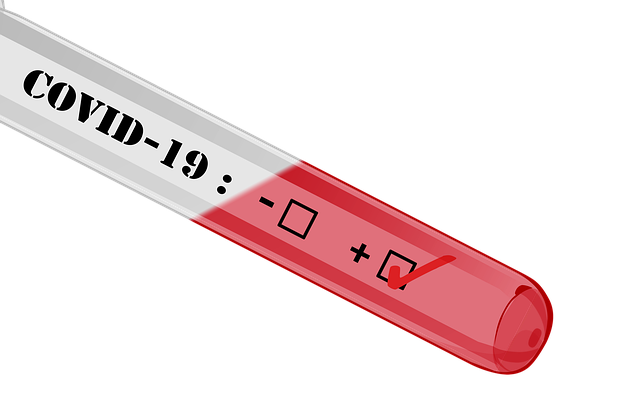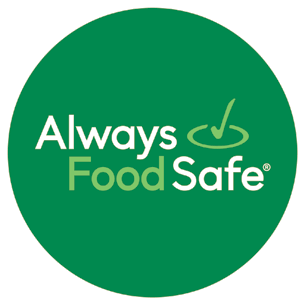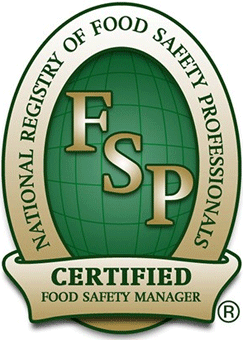Food Safety Classes
- Minnesota Initial Online Class
- Minnesota Refresher Live Webinar
- OHIO Manager - Level 2
- Wisconsin Small Operator
- Certified Food Safety Manager (CFSM) Courses
- Food Allergen Awareness Certification
- Hotel & Restaurant OSHA Safety
- Texas Live ServSaf. Classroom Classes
- OHIO PIC
- Continuing Education
Compare Exams
Food Manager Training
Services
Keynote & Training Topics
Blog
10 Common Questions About COVID-19 by Marshie Morgan

12 Mar 2020 17:00:00 Marshie

1. How long is the incubation period?
The “incubation period” means the time between catching the virus and beginning to have symptoms of the disease. According to W.H.O., World Health Organization, the incubation period for coronavirus estimates the incubation period for COVID-19 ranges from 1-14 days, most commonly around five days. Some studies have seen the incubation period up to 29 days.
2. Is COVID-19 transmitted by food?
The answer is no, however, never say never. By properly cooking food to correct temperatures and reheating foods to 165 degrees F, the likelihood is slim of transmission. Dr. Jha, “as a general rule, we haven’t seen that food is a mechanism for spreading the virus.”
3. How does COVID-19 travel?
It travels by air, human contact and surface to surface contact.
The virus traveling by air comes from coughs, sneezes and from the spittle from chewing gum. The COVID-19 can live in air in a viral droplet for up to 3 hours confirmed by a study done by medRxiv. Also be aware that when you don’t cover your mouth to cough or sneeze the virus is airborne and can travel up to 50 feet. You may not be aware when you chew gum a light spray is released into the air. If you want to try an experiment, get out a sheet of paper 8x11 put it out in front of your face and see what happens when you chew gum. This is why in food establishments we do not allow employees to chew gum.
The next way COVID-19 travels is by human contact. A few examples are holding hands with someone who has just coughed. Shaking hands with someone who just rubbed their nose. Yes, it even travels when you kiss your significant other. One way to circumvent human contact is to politely tell someone I am not shaking hands but waving or bowing as a sign of greeting. CDC, Center for Disease Control is advising to stay a safe distant from people about 6 feet. The third way COVID-19 travels, from surface to surface which is much harder to control out in public areas. The Journal of Hospital Infection concluded that the virus can live on metal, glass and plastic up to 9 days.
4. How long does COVID-19 live verses the Flu virus?
COVID-19 can live up to 9 days and Flu virus approximately 48 hours.
5. How does COVID-19 get into the body?
It travels inside the body by hitching a ride through the eyes, mouth and/or nose. Then it takes the superhighway in the body to latch on to the lungs.
6. Can COVID-19 survive in hair, clothes and hard surfaces?
Yes, yes and yes. This is why personal hygiene is important to slow down the virus.
7. What can I do to slow down the virus?
• Limit going out to large public gatherings
• Support first responders, medical personnel and public health officials, they are working as fast as they can with the influx of people coming in with limited resources
• Stay home if you are feeling ill
• Wash your hands and dry them with a paper towel
• Stop chewing gum, sneeze and cough into your elbow
• Carry sanitizer wipes with you and wipe down everything you touch out in public
o Hand rails
o Handles
o Chairs
o Bathroom locks
o Toilet handles
o Faucets
o Grocery carts
o Subway pole
o Door knobs
o Printer at work
o Desk
o Computer key board
o Phone
o Credit card machine and pen
o Any item which the general public uses
8. How often should we sanitize in our classroom, office, restaurant and or workplace?
Those items which get touched by more than one person should be sanitized between people touching them because the new person could infect the hard surface and then the next person who touches the surface like a menu could then be infected when they touch their mouth from the previous person.
9. How do I know if I am carrying COVID-19?
You don’t unless you have been tested positive. Thus, it is best to be mindful of others and don’t touch your eyes, nose or mouth. Wash your hands often. When going out to eat, wash your hands before eating and after your meal. It goes without saying you should always wash your hands after going to the bathroom. If you feel ill, stay home.
10. Coronavirus symptom, or something else?
CDC and Mayo Clinic, say symptoms and risks vary from person to person. They encourage you to always check with your doctor. Coronavirus and Flu have fever, fatigue, body aches, cough and worsening of symptoms. COVID-19 also includes shortness of breath, history of travel and exposure.
Blog Search
Popular Articles
- Eva Barrios E. Sous Chef of Austin Country Club
- Gas Cylinders in Restaurants
- Why is Hepatitis A Vaccines Mandatory for Food Handlers in Parts of U.S.?
- Cross-Contact vs. Cross-Contamination by Marshie Morgan
- Chef Paola Chamberlain, C.C. a Private Chef and E. Chef at Waco Ale Company in Waco, TX
- Lance S. Cook CEC, CCA, WCEC, CFBE,FMP, CFSM at Hammock Dunes Club in Palm Coast, Florida
- Geno Bahena Chef de Cuisine at Blue Dalia Restaurant and Tequila Bar
- Daniel Vercher E. Chef of Guckenheimer
- Chef Michele Brown, CEPC, EWMCS, Department Lead Instructor at Texas State Technical College
- Michael Lottermoser with W Dallas Victory Hotel & Residences
























